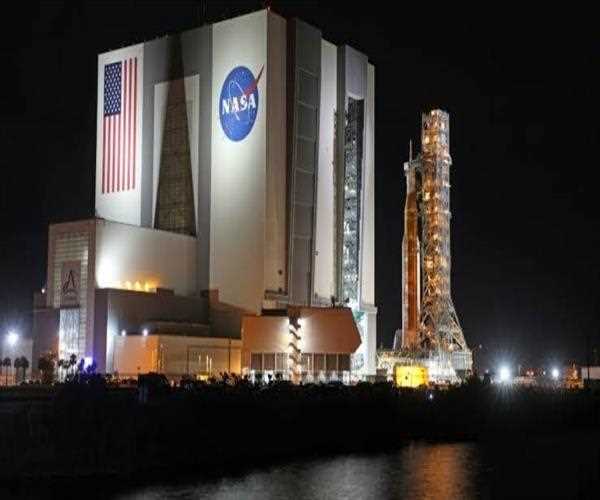
NASA's Massive Rocket Pulls Up To The Launch Pad For An Unmanned Moon Mission
NASA moved its biggest rocket to a launch pad in Florida on Friday and will attempt to launch a much-delayed unmanned trip to the Moon once more in 10 days.
The rocket was brought back to the Vehicle Assembly Building to be protected from Hurricane Ian after two launch attempts this summer were cancelled due to technical issues. The US space agency took advantage of the free time to perform quick fixes and recharge the batteries that run the Space Launch System (SLS) rocket's systems.
According to NASA, the four-mile (six-kilometer) trip of the SLS rocket from the Vehicle Assembly Building to Launch Pad 39B at the Kennedy Space Center took about nine hours.
The crawler-transporter, a sizable platform used to slowly roll out the 322-foot (98-meter) rocket, was built to reduce vibrations. On November 14, at 12:07 a.m. Eastern Time (04:07 gmt), there will be another launch attempt. Alternate dates are November 16, at 1:04 a.m., and November 19, at 1:45 a.m. At a briefing on Thursday, Jim Free, assistant administrator for NASA, said, 'We're comfortable launching at night.'
According to Free, the information needed to monitor the rocket's performance will be obtained using radar and infrared camera images. The mission would last a little over 25 days if the rocket takes off on November 16. The crew capsule would splash down in the Pacific Ocean on December 9.
Five decades after the last time humans set foot on the moon, the eagerly awaited uncrewed mission known as Artemis 1 will move the US one step closer to sending people back. The objective of Artemis 1, which is named after Apollo's twin sister, is to test the SLS rocket and the Orion crew capsule that is mounted on top of it.
Orion will travel around the Moon in an elliptical pattern, getting as near as 60 miles (100 kilometres) to it at its closest approach and as far away as 40,000 miles at its furthest — the deepest into space ever reached by a spacecraft intended to carry people.


